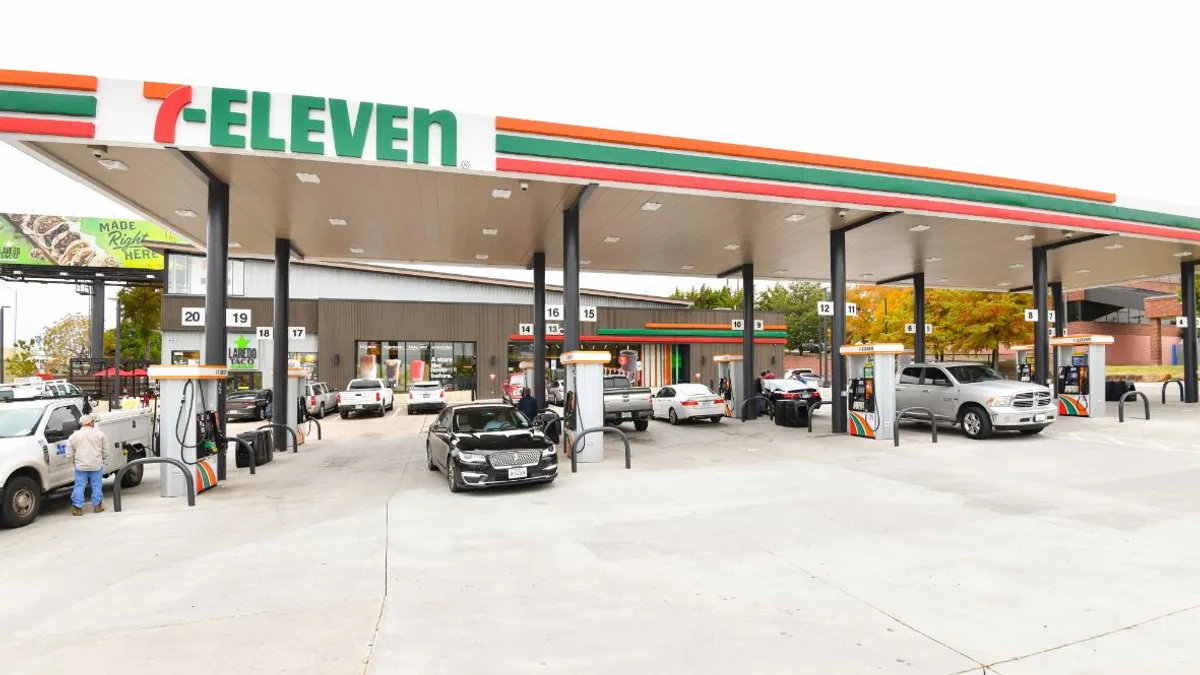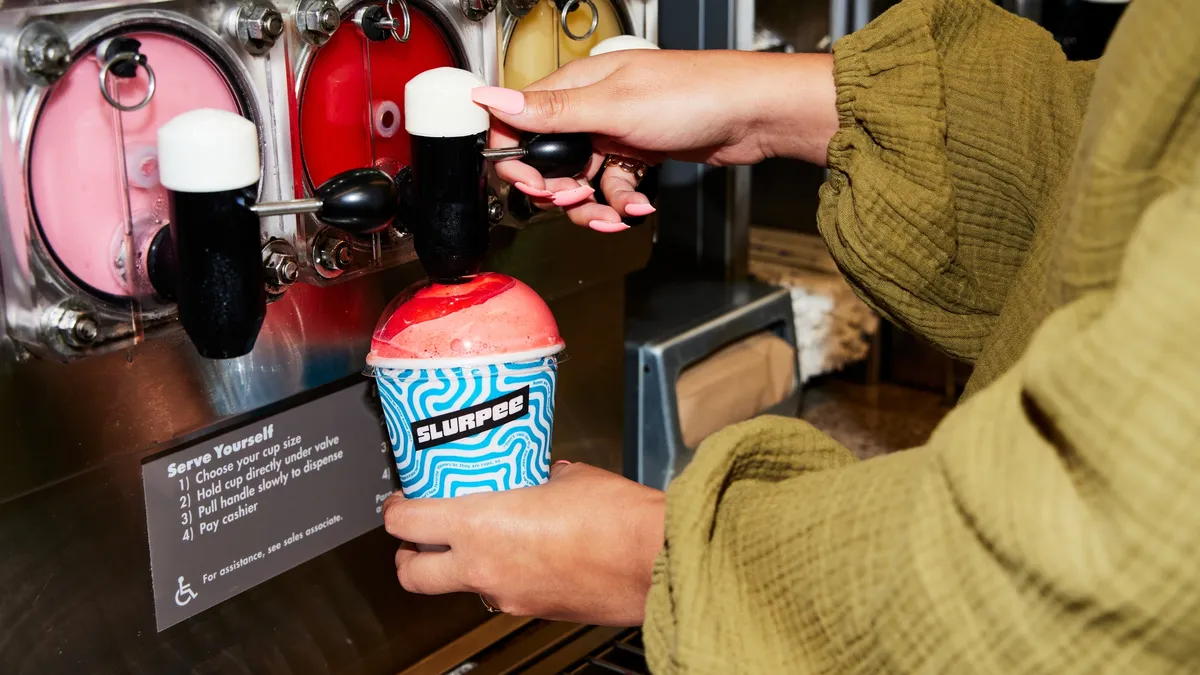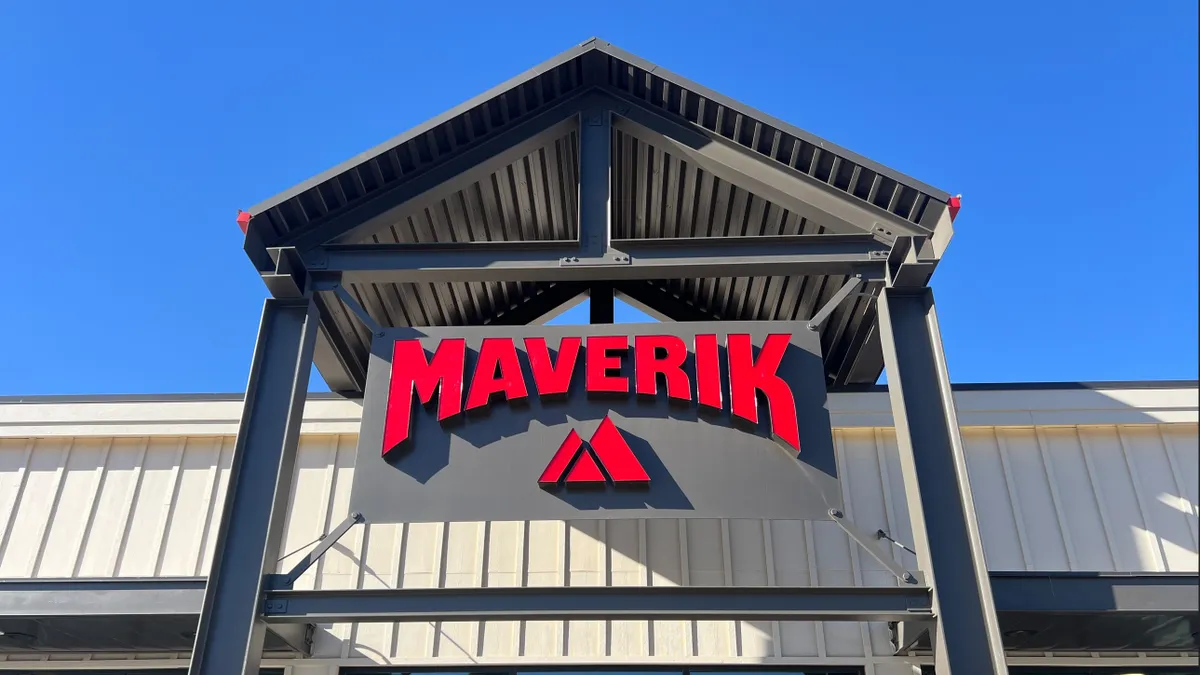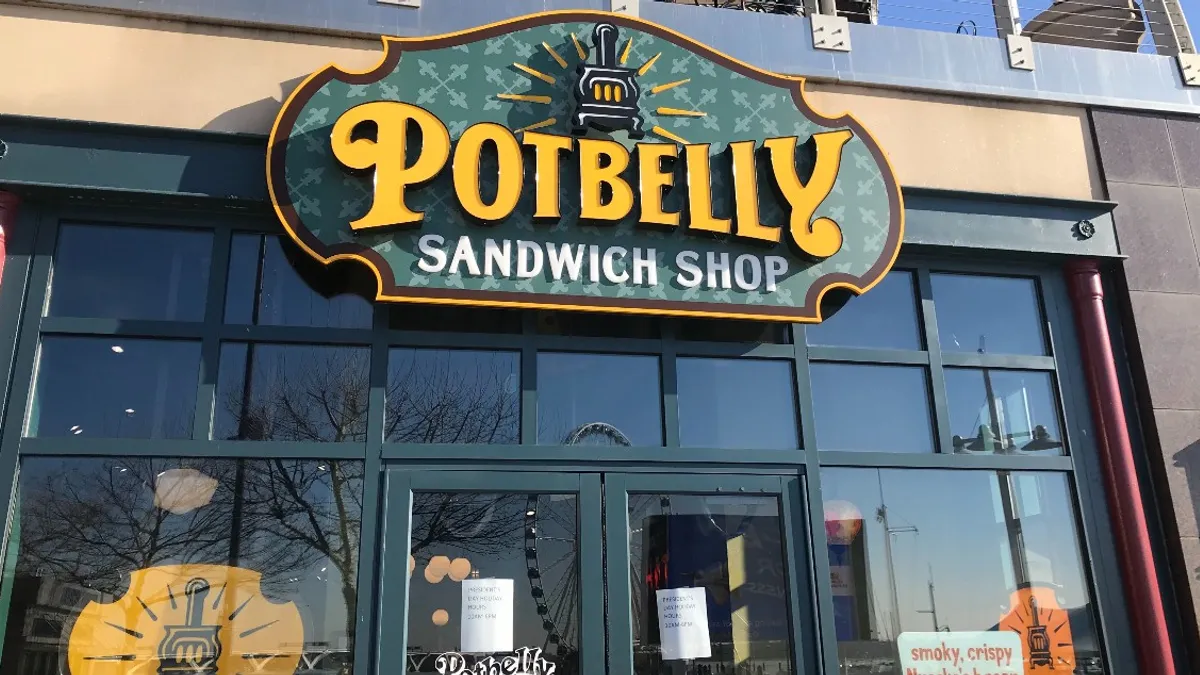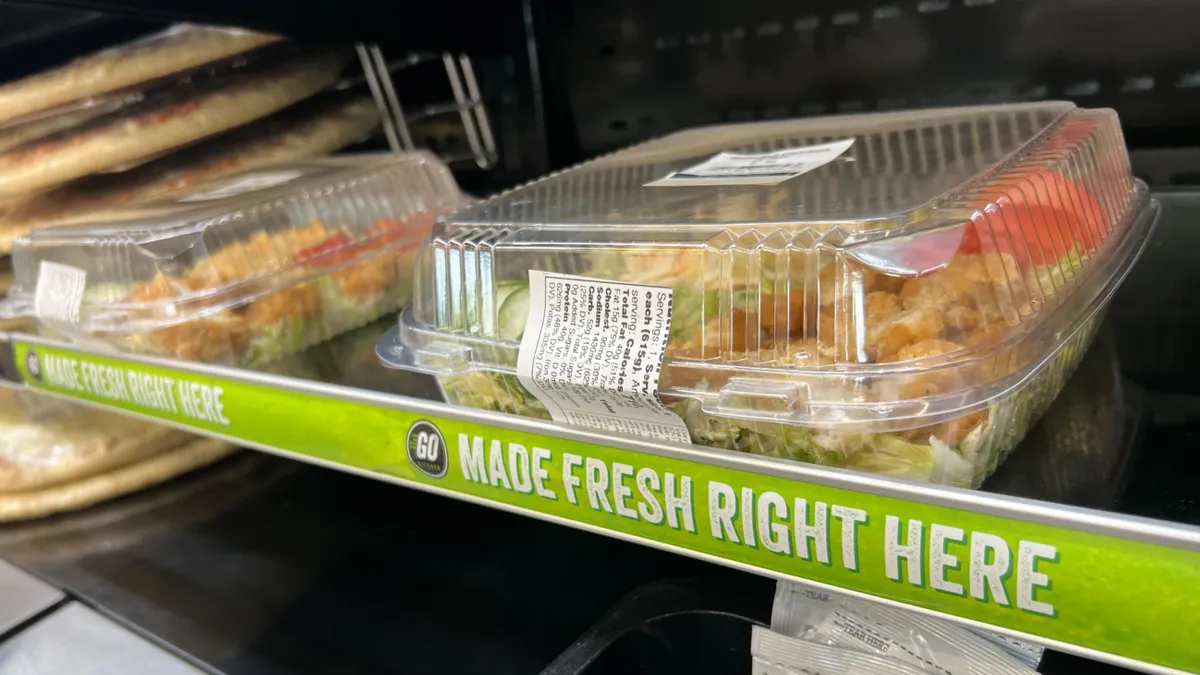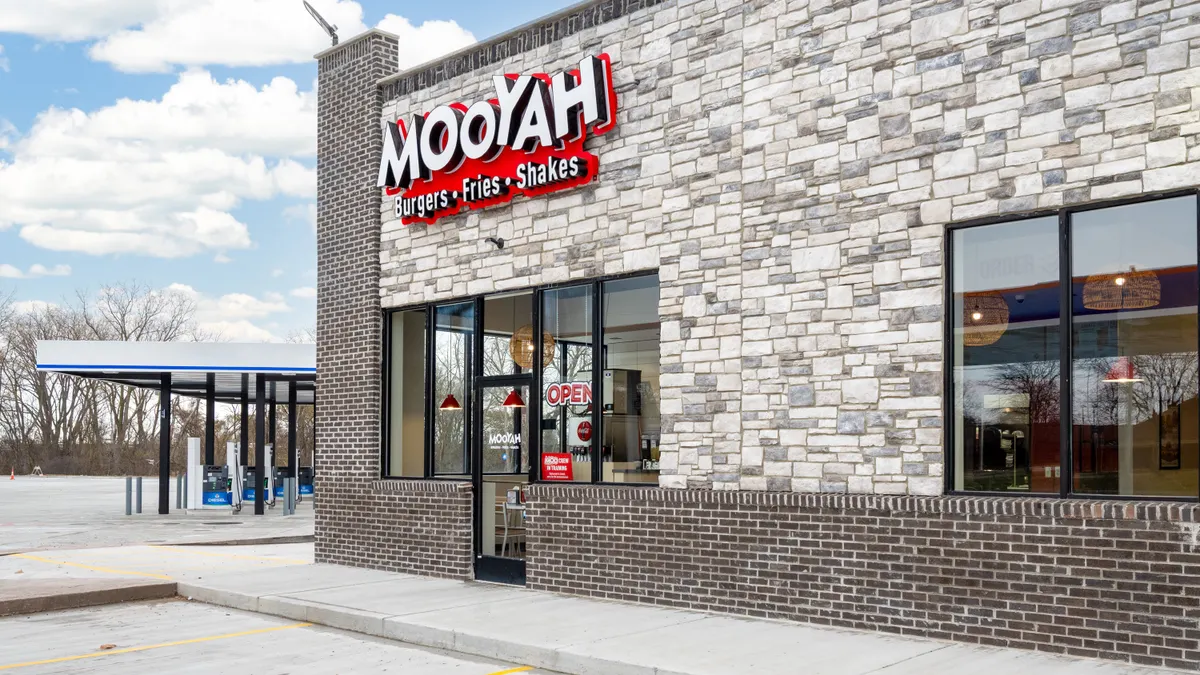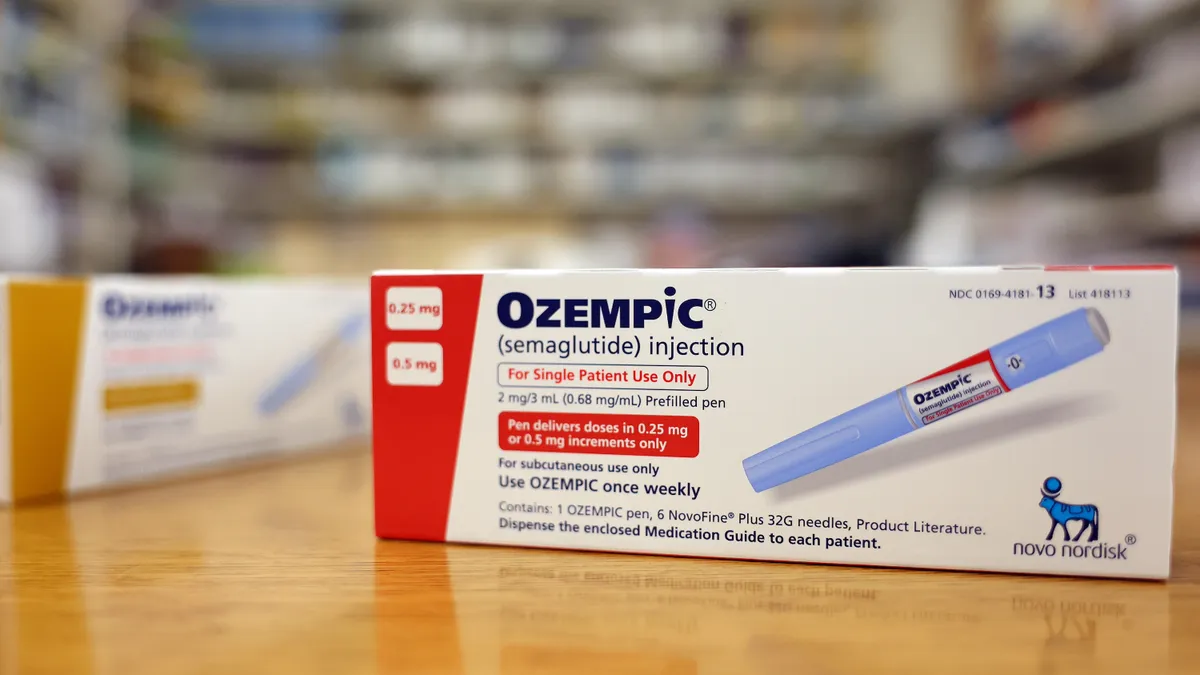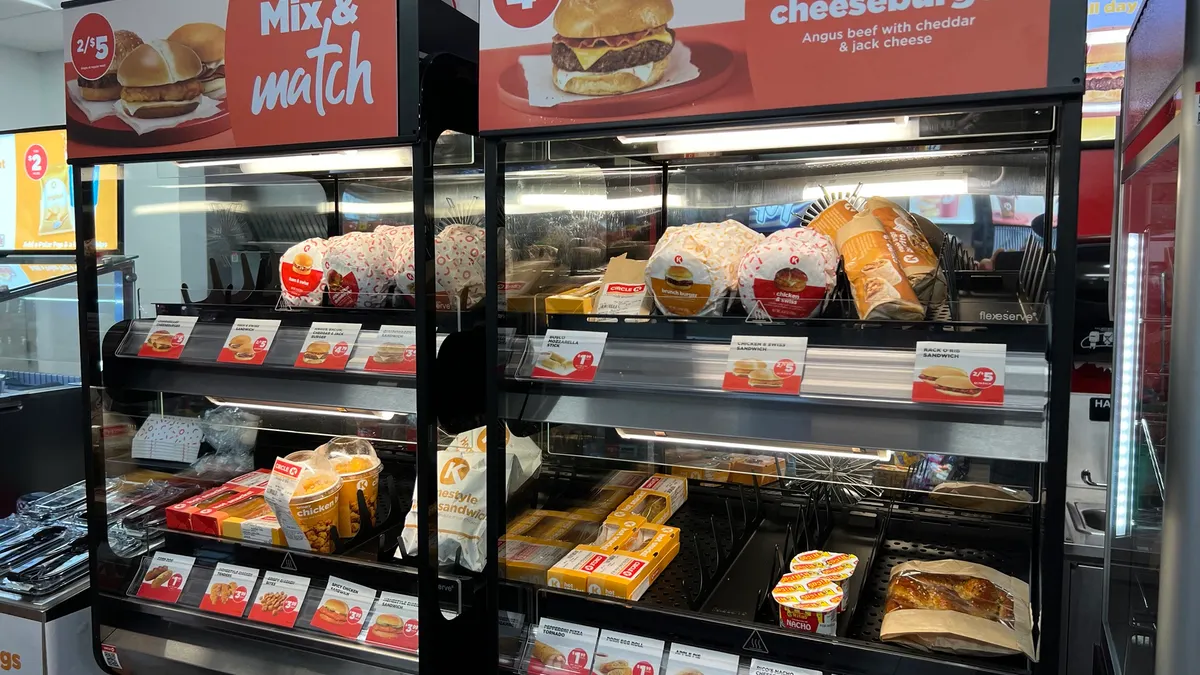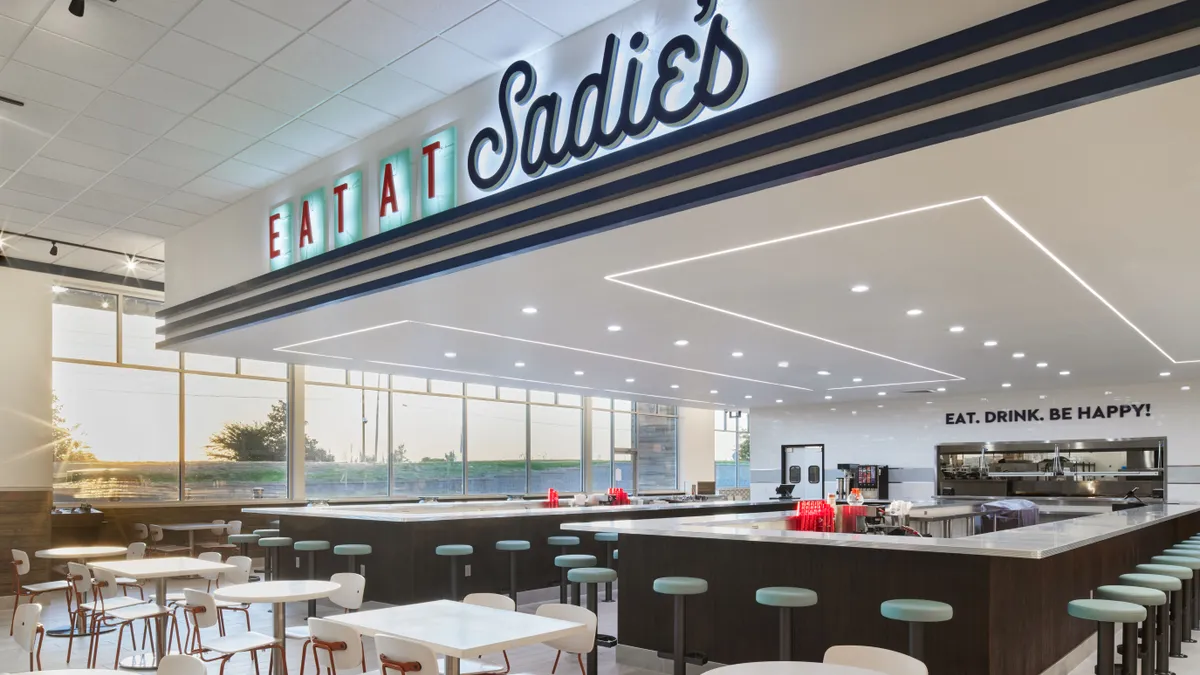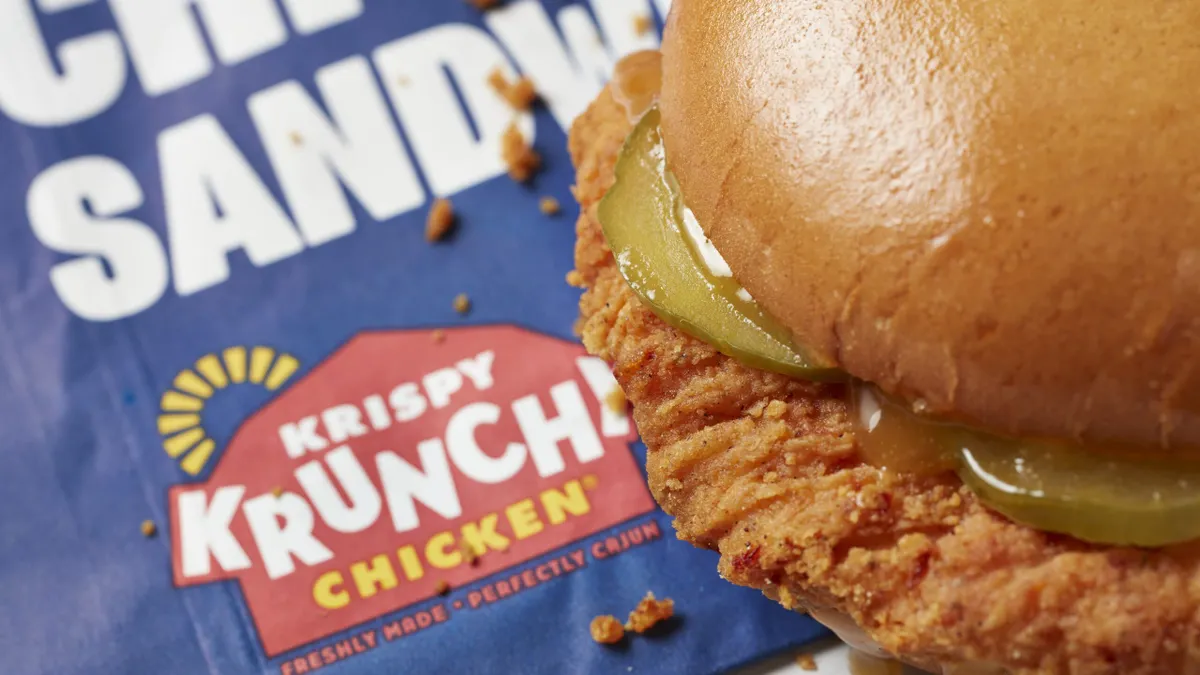Despite being the leader in both the global and U.S. convenience store markets by store count, 7-Eleven’s leadership is worried about the company falling behind.
“We have been the market leader for many years, and we still are, by a wide margin. There are a lot of positive aspects to this, but it can also be a dangerous place to be,” said Stephen Dacus, Seven & i CEO, in a recent company presentation. “Long-term success can breed a certain complacency in the business leading to slower innovation and slower execution. Others copy our strengths and catch up.”
Next-generation stores and an expanding footprint are front-and-center in the company’s drive to stay ahead. Since the fall of 2024, 7-Eleven has made multiple store expansion announcements touting bigger locations with added amenities as it seeks to draw in more customers — especially ahead of a planned IPO in 2026.
Here’s a closer look at 7-Eleven’s evolution outlining what the U.S. can expect from the convenience store giant over the next few years.
7-Eleven’s growing (and shrinking) footprint
7-Eleven made headlines when it announced large-scale expansion goals in October 2024. The company said at the time it expected to add 600 new stores to its network by 2027.
Six months later, the company looked even further ahead, sharing plans for 1,300 new stores in North America by 2030. The retailer is particularly focused on adding larger-format stores that are likely to include fuel pumps.
But does that mean 7-Eleven’s overall North American store count is going to go up by well over a thousand sites by the turn of the decade?
Maybe, but probably not.
7-Eleven announced plans in October to close 444 underperforming stores. Beyond that big announcement, the retailer has closed more stores than it opened in North America for the past two years and plans to do the same in the current fiscal year.
7-Eleven closings outpace new openings recently
The last time 7-Eleven added more stores than it lost in North America was in the fiscal year ending Feb. 28, 2022 — the year it completed its acquisition of nearly 4,000 Speedway locations. For the fiscal year ending in February 2023, the company closed 46 more stores than it opened. That was followed by a net loss of 45 stores for the year that ended in February 2024 and a loss of 159 total sites for the year that ended in February 2025.
Seven & i also expects the trend to continue this fiscal year, with a forecast of 125 openings and 345 closings.
With the IPO looming in 2026, the company may become even more discerning about which stores remain in its network.
Focus on food and restaurants
The convenience store landscape in the United States has been shifting toward fresh foods. There’s Wawa’s hoagies, Casey’s General Stores’ pizza and a whole host of regional and local companies offering tempting, thoughtful menus.
Dacus said that 7-Eleven has a strong foodservice program in Japan, but that reputation has not carried over to North America.
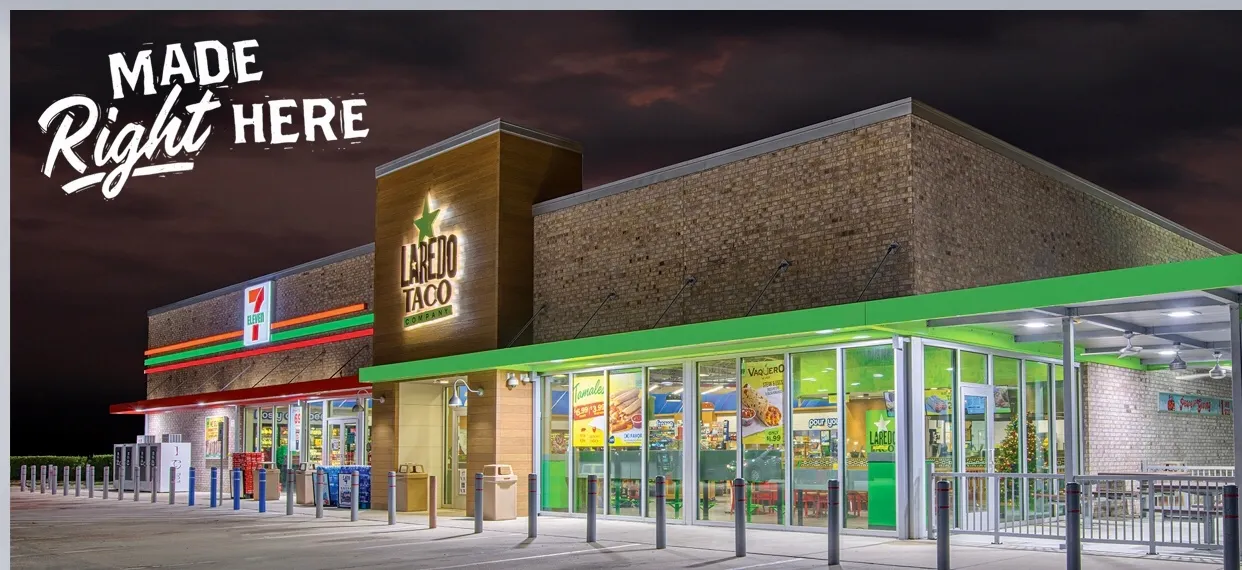
“In the U.S. … many of our smaller competitors are focusing more on food and doing it well,” he said during the presentation. “As the environment has changed, we need to step up.”
7-Eleven has made some notable strides recently in foodservice as it tries to shore up this area of the business. In addition to a food program that includes roller grill items, grab-and-go foods, pizza and more, it has also developed three proprietary QSR programs. Select Speedway stores have Speedy Eats, while some 7-Elevens have either Laredo Taco Company or Raise the Roost Chicken & Biscuits locations.
7-Eleven locations with QSRs perform materially better than those without, indicating the company sees a future in developing fresh, made-to-order cuisine.
“This format delivers much higher sales and profit than our other formats and drives incremental attachment sales of 81 cents for every dollar spent in the restaurant,” said Dacus. “That’s big.”
The company currently has about 1,100 stores with QSRs, and Dacus said that the company plans to nearly double that number through the next five years. That includes at least 50 such stores in 2025, 7-Eleven said earlier this year.
7-Eleven’s goal of making its stores into more enticing meal destinations could hit some bumps, however. A former vice president of operations for the company, who spoke to C-Store Dive earlier this year under condition of anonymity, said the chain may struggle to get its large number of franchisees on board with the new plan.
“You have a bunch of people that bought into a system expecting to sell smokes, lottery, beer and Snickers,” the former VP said. “If they wanted to sell food, they would have gotten a Taco Bell [or] Dunkin Donuts.”


